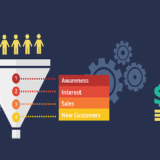5 Easy Steps for Selecting Top Mutual Funds of 2018
The right mutual fund for an investor is the one that best suits their financial goals. So, the right fund for you might not be the best option for another investor. But what are the factors on the basis of which you can determine whether or not a mutual fund is right for you? Five such factors are discussed in this post.
Every investor wants to earn the highest returns with their mutual fund investments. However, it is not necessary for a top-performing mutual fund to suit the risk appetite and objective of all the different types of investors. In other words, a mutual fund that perfectly suits your needs might not really be the best option for someone else.
So, how can you select mutual funds for your investment? Well, there are a few crucial factors that can help you make the decision. Five such factors are discussed below-
1. Your Investment Objective
Just like every other type of investment, you first need to fix an objective for your mutual fund investments too. It can be a long-term goal like retirement planning, your child’s education or marriage, etc. Or it can also be a short-term goal like tax-saving, buying a car, or earning higher returns than bank FDs.
So, the investment objective of every investor can be different. Know what your investment objective is to be able to select the right type of mutual fund.
2. How Long Do You Want to Remain Invested?
The investment duration abundantly relies on your investment objective. A short-term goal might require you to invest anywhere from 1 year to 5 years. If you have a long-term goal, you might continue investing for ten years or more.
Equity funds are known for long-term wealth generation whereas debt funds are ideal for short-term goals. If you want to save taxes, there are ELSS funds for the same.
3. What is Your Investment Style?
Your investment style also impacts your fund selection. While equity funds are well-known for higher returns, they’re also high on risk. On the other hand, debt funds offer lower returns but are considerably safer than equity funds.
If you’re young and have a long-term investment horizon, equity funds can be a great choice. If you’re a risk-averse investor, it is better to go with options like large-cap equity funds, debt funds, or balanced funds.
4. Check the Past Performance of the Funds
Once you’ve fixed an investment objective, duration, and the type of fund that is right for you, start checking the past performance of the funds. For instance, if you want to invest in large-cap equity funds, review the past performance of at least 10 of the top performing funds from this category.
When going through their performance, focus on their consistency. So, rather than going with a fund that delivered 15% returns last year, prefer a fund that was able to produce 12% returns every year consistently.
5. The Reputation of the AMC
Once you’ve shortlisted a few top mutual funds that are consistent performers and suit your investment objective and risk appetite, check the reputation of the AMC’s offering those funds.
It is better to go with a reputed AMC that has extensive industry experience. Also, check the experience and investment style of the fund manager managing the selected funds. This will make it easier for you choose 1-2 funds from the list of funds that you’ve shortlisted.
To Conclude
Selecting a mutual fund is considerably easier than picking stocks. However, it still needs a bit of knowledge. If you’re new to mutual funds, it is always better to start small and learn from your experience rather than gaining knowledge first and then planning to invest.
Read more: Understand what a capitalization title is and how to participate in the raffles
If you’ve just started earning, SIP is also a great option that allows you to start investing with just Rs. 500 each month. Remember that the sooner you start investing, the higher are the chances for you to create an impressive, well-balanced portfolio that can help you achieve your objectives.











